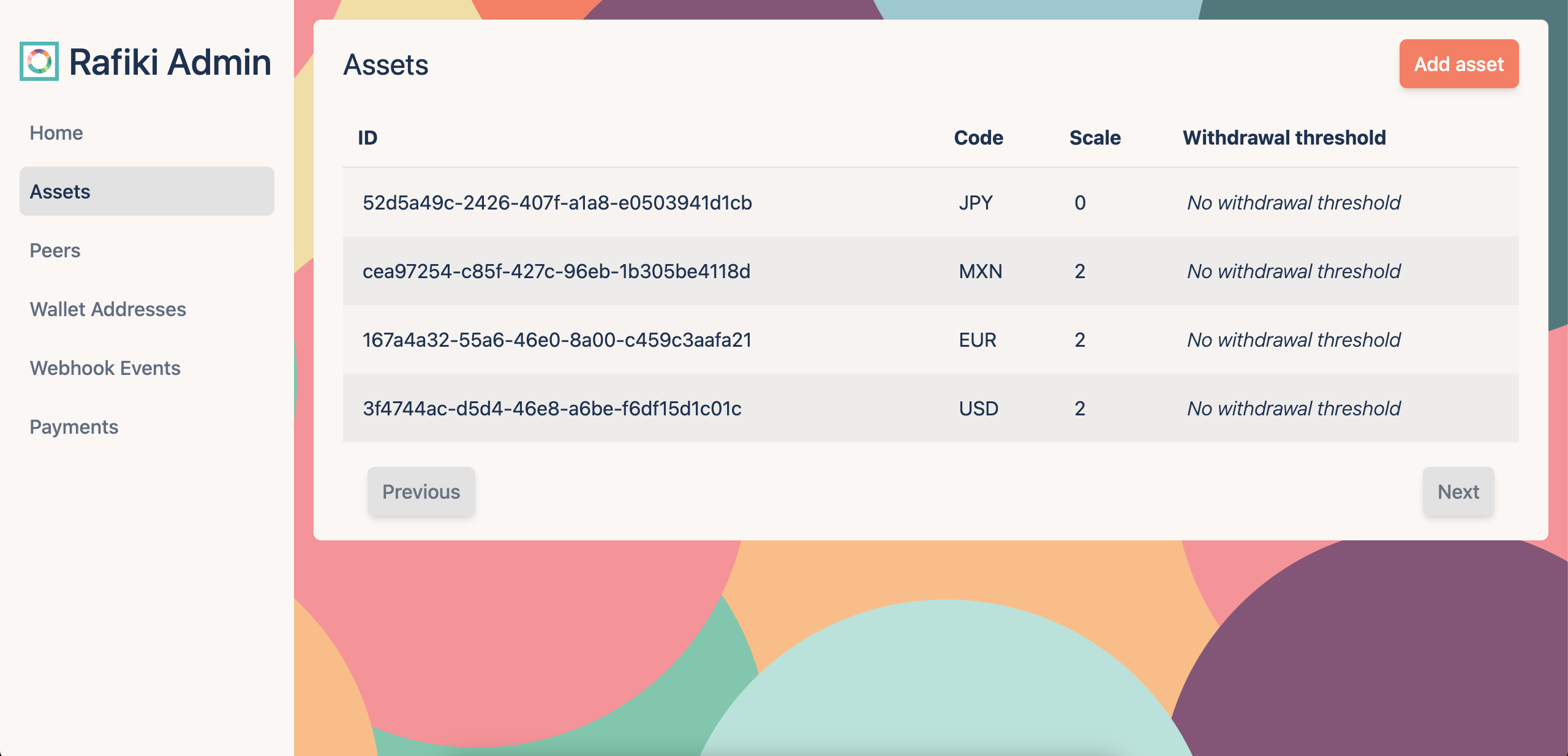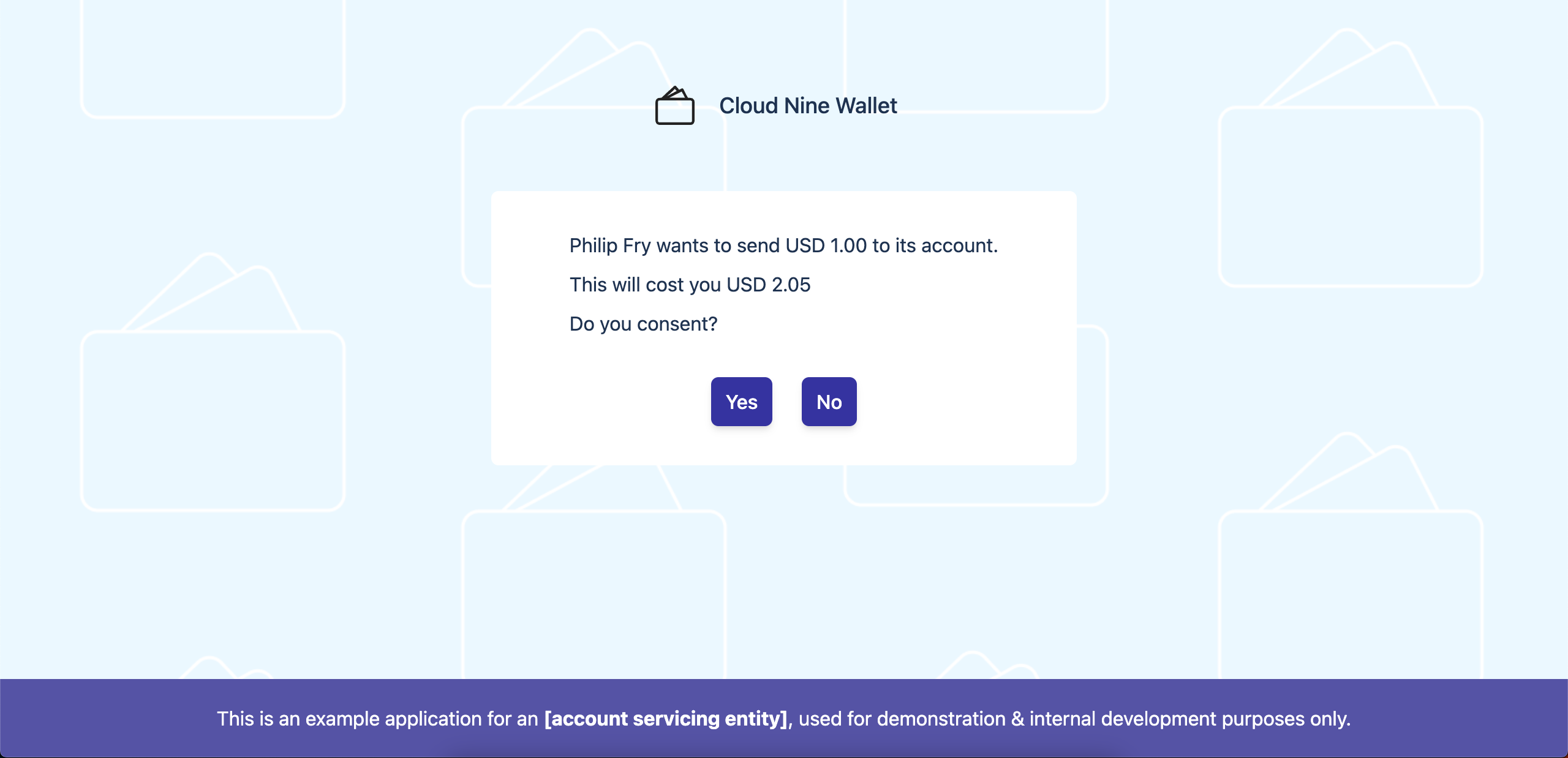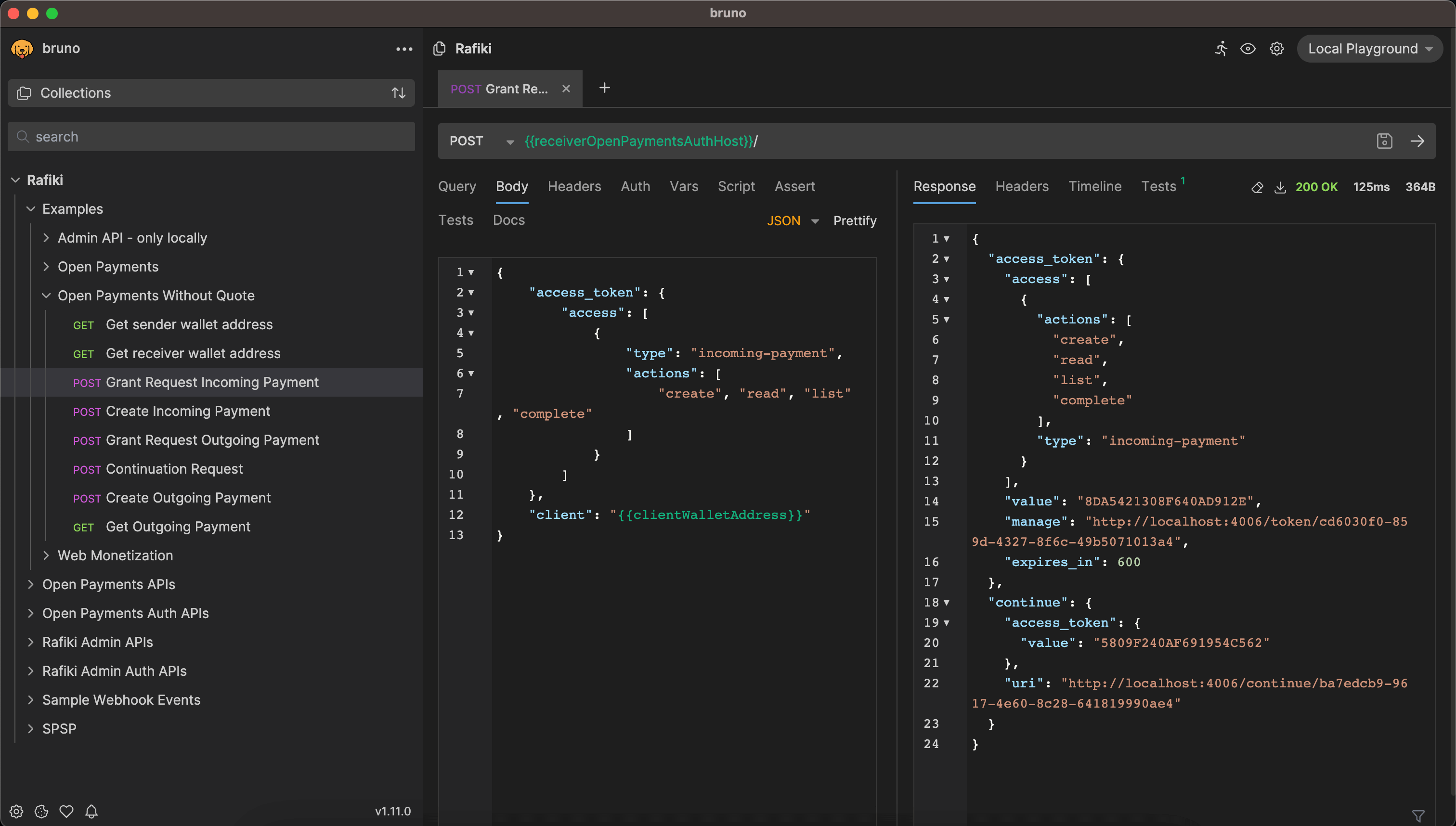Breaking Down Rafiki: What Makes Our Friend Tick
Written by Nathan LieIntroduction
It has been said that the Interledger Foundation upholds open technology as one of its core values. It has also been said that Rafiki, a white-label application that enables Interledger usage, upholds this value by being open-source and allowing anyone to contribute.
It has not been said, however, how one comes to intimately understand Rafiki. It’s not impossible, to be sure, but the Interledger endeavor has been around for long enough that a write-up at a lower level is warranted.
So, what makes Rafiki tick? What do we see when we venture beyond what Rafiki does and into how it does those things?
Disclaimer
This article assumes the reader has high-level knowledge of the following concepts:
This article also assumes that its readers already have high-level knowledge of Rafiki itself, and that they understand on that level how it accomplishes being an Interledger node and an Open Payments server.
Components
Rafiki is comprised primarily of three packages:
- A
backendpackage that extends an API for managing Open Payments resources like Incoming or Outgoing Payments, an Admin API, and an API from the Interledger connector to accept ILP packets. - An
authpackage that provide third parties with a method of acquiring authorization to manage Open Payments resources on the Rafiki instance’s associatedbackendpackage. It also extends an Admin API as well. - A
frontendthat serves as an Admin-level UI for that Rafiki instance. It allows the manager of that Rafiki instance to directly manage items such as other peers on the Interledger network or what currencies it supports.
Rafiki also maintains a few other utility packages:
- A
documentationpackage that the documentation website (https://rafiki.dev/) is maintained from. - A
mock-account-service-libthat provides a useful library to mock the utilities used by the mock Account Service Providers in the test local environment. - A
token-introspectionpackage that creates a client to easily manage a GNAP token with an Open Payments Authorization server.
All of these packages are managed together as a monorepo using pnpm.
The backend and auth stacks
Both the backend and auth packages are largely built in the same way. They both leverage the same three Node.js frameworks:
KoaJS is used as the framework for setting up the API routes, assigning functions to handle business logic for those routes, and wrapping those in middlewares for addtional functionality. It’s a lot like an Express server if that helps with familiarity.
AdonisJS is used to perform dependency injection on the services used by each package to perform business logic.
KnexJS is an ORM that manages calls made to Rafiki’s Postgres database.
Additionally, both packages extend a GraphQL API that serves as an Admin API.
Finally, ObjectionJS is used as an ORM to perform database operations. It leverages the query building syntax of KnexJS to express its database operations.
Familiarity with these frameworks will be valuable in understanding how Rafiki works, and with understanding the rest of this post.
The Rafiki Backend
As mentioned before, the Rafiki backend manages Open Payments resources. These resources are managed by services attached to an inversion-of-control (IoC) container via dependency injection with AdonisJS, as also mentioned previously. To see this in action, the /src/index.ts is the best place to look. Take this example of how the service for handling incoming payment routes gets injected into the IoC container:
import { Ioc, IocContract } from '@adonisjs/fold'import { createIncomingPaymentRoutes } from './open_payments/payment/incoming/routes'
...
const container: IocContract<AppServices> = new Ioc()
...
container.singleton('incomingPaymentRoutes', async (deps) => { return createIncomingPaymentRoutes({ config: await deps.use('config'), logger: await deps.use('logger'), incomingPaymentService: await deps.use('incomingPaymentService'), streamCredentialsService: await deps.use('streamCredentialsService') })})In this call, a name for the service is passed to the IoC container, and a factory for that service. In turn, that factory takes the other services that it depends on. In this case, the incomingPaymentRoutes service depends on services that parse configuration and output logs for the backend. The index.ts file thus good for seeing all of the services the backend uses, and how each of the services depend on one another.
These services are then attached to routes in the /src/app.ts file. The app.ts file is a great place to work backwards from and see which routes exist on the backend server and what services are used to complete the operations presented by the routes. Take this route for example:
const incomingPaymentRoutes = await this.container.use( 'incomingPaymentRoutes')
...
// POST /incoming-payments// Create incoming paymentrouter.post<DefaultState, SignedCollectionContext<IncomingCreateBody>>( '/incoming-payments', createValidatorMiddleware< ContextType<SignedCollectionContext<IncomingCreateBody>> >( resourceServerSpec, { path: '/incoming-payments', method: HttpMethod.POST }, validatorMiddlewareOptions ), getWalletAddressUrlFromRequestBody, createTokenIntrospectionMiddleware({ requestType: AccessType.IncomingPayment, requestAction: RequestAction.Create }), httpsigMiddleware, getWalletAddressForSubresource, incomingPaymentRoutes.create)In this mounting of the POST /incoming-payments route, all of the middleware as well as the main handler (incomingPaymentRoutes.create) can be seen being attached to that mounting. Note how the incomingPaymentRoutes services is acquired from the container using the name that was passed into the function that attached that service to the IoC container. This pattern can be followed for other routes to see which services handle fulfilling requests made to the routes on the Rafiki backend.
Finally, the backend also launches a GraphQL server that extends an API defined by this schema.
In order fulfill the payments described in Open Payments resources and maintain peering relationships, Rafiki runs an instance of an Interledger Connector, acting as its node on the Interledger network. More on this in a future blog post.
The Rafiki Authorization Server
The Authorization Server on Rafiki is structured similarly to the backend, in that it injects services into an IoC container which are retrieved by routes on Koa server to perform the business logic.
import { Ioc, IocContract } from '@adonisjs/fold'import { createGrantRoutes } from './grant/routes'
...
const container: IocContract<AppServices> = new Ioc()
...
container.singleton('grantRoutes', async (deps: IocContract<AppServices>) => { return createGrantRoutes({ grantService: await deps.use('grantService'), clientService: await deps.use('clientService'), accessTokenService: await deps.use('accessTokenService'), accessService: await deps.use('accessService'), interactionService: await deps.use('interactionService'), logger: await deps.use('logger'), config: await deps.use('config') })})Again, note the route service for grants is mounted to the container, and then subsequently referenced when attaching service functions to the relevant routes.
const grantRoutes = await this.container.use('grantRoutes')
...
/* Back-channel GNAP Routes */// Grant Initiationrouter.post<DefaultState, CreateContext>( '/', createValidatorMiddleware<CreateContext>(openApi.authServerSpec, { path: '/', method: HttpMethod.POST }), grantInitiationHttpsigMiddleware, grantRoutes.create)Like the backend, the auth server also extends a GraphQL API to perform admin functions. The API is modeled by this GraphQL schema.
The Rafiki Admin Frontend
The Rafiki Admin frontend has a React-based (specifically Remix) frontend with server-side rendering that consumes the GraphQL API extended by the backend server.
In general, the name of a file dictates how the app constructs its routes. For example, the file assets.create.tsx is expressed as /assets/create in the frontend app. Path parameters are denoted by a $ sign, so the file assets.$assetId.tsx might be expressed as /assets/1234-1234-12345678, where the $assetId portion of the file name stands in for an identifier in the final route.

Pages on the frontend acquire data to populate the view and send data in requests using loaders and actions. The page for an invidivdual asset is an example of a file containing this loader and action pattern.
Seeing Rafiki In Action
If Docker is installed, the whole environment can be started locally with a single command:
pnpm localenv:compose upWith this environment live, the Admin GraphQL Endpoints can be demoed using Bruno. The Rafiki repository contains a collection which contains example calls for all of the GraphQL endpoints on both the backend and auth servers. It also contains calls for every Open Payments action and examples for certain flows in Open Payments.
To help provide an idea of what integrating with Rafiki would be like, the local Docker environment also starts up two Mock Accout Servicing Entities (Mock ASEs) to represent integrators of Rafiki.
These Mock ASEs have pages that display information for individual accounts on their respective Rafiki instances. Crucially, they each also host pages that collect authorization from account owners for payments made using grants from the auth server.

The flow for creating an outgoing payment can also be demoed with a combination of Bruno API calls and the Mock ASE consent screen.
Conclusion
With any luck, this article should bridge the gap between loftier concepts like Open Payments and the code that implements it. The files showcased in this article generally serve as good starting points for figuring out how the rest of a given package works, and the patterns that are used throughout them.
With even more luck, this article will be relevant for quite some time after publication, but if it isn’t, it can serve as a recent entry in the Interledger graveyard.
For even more information, please peruse the Rafiki documentation.
As we are open source, you can easily check our work on GitHub. If the work mentioned here inspired you, we welcome your contributions. You can join our community slack or participate in the next community call, which takes place each second Wednesday of the month.
If you want to stay updated with all open opportunities and news from the Interledger Foundation, you can subscribe to our newsletter.

